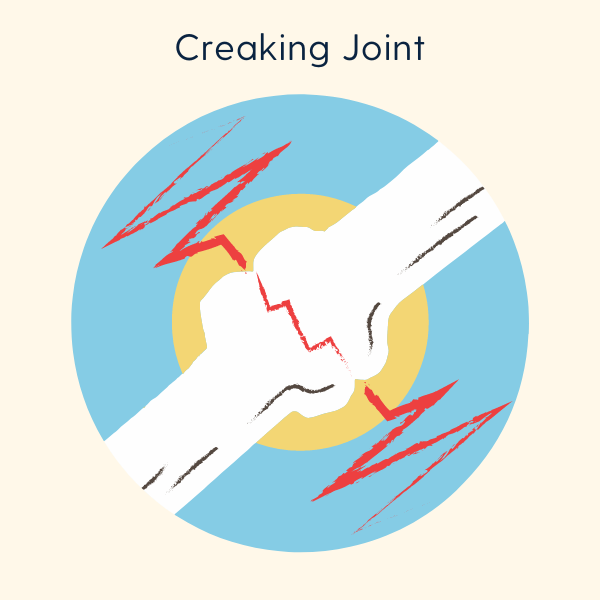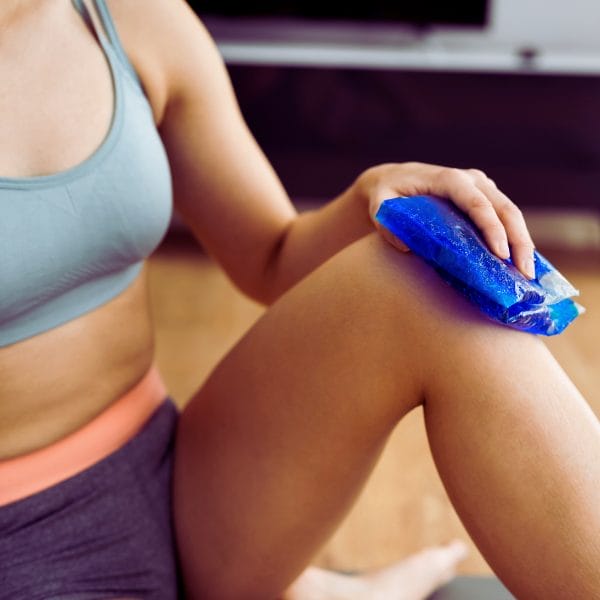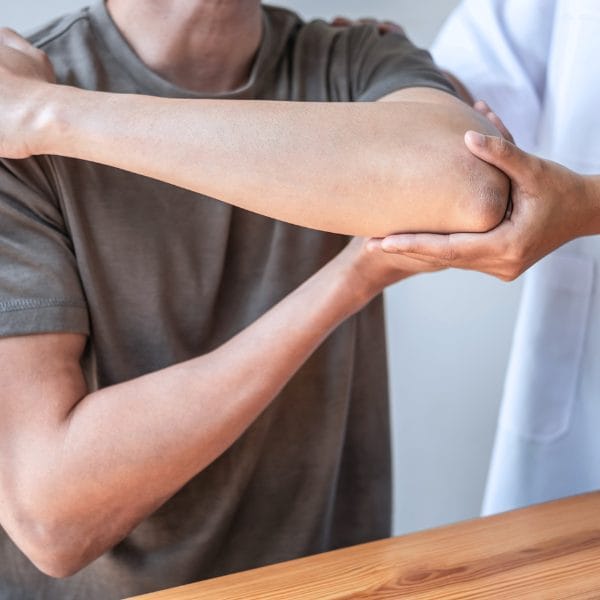Creaking Joints: what you need to know
Creaking joints (more formally known as Crepitus) are a common problem for many people as they age. They can make everyday activities such as walking or climbing stairs difficult and painful. However, while the popping and cracking sound can be worrying, it is usually not a sign of serious damage.
PostureGeek.com Tweet

Creaking joints (more formally known as Crepitus) are a common problem for many people as they age. They can make everyday activities such as walking or climbing stairs difficult and painful. However, while the popping and cracking sound can be worrying, it is usually not a sign of serious damage.
There are many possible causes of creaking joints. It can result from wear and tear on the bones and cartilage, inflammation, or fluid in the joints. In some cases, changes may be due to an underlying medical condition.
What is Crepitus?
Crepitus is the medical term for creaking joints. Crepitus is a common symptom of osteoarthritis, the most common form of arthritis. Osteoarthritis occurs when the cartilage that cushions the ends of bones breaks down. This can cause the bones to rub against each other, leading to joint pain, stiffness, and the painful joint popping sound.
Crepitus can also result from other conditions that affect the joints, such as rheumatoid arthritis, gout, and bursitis. In addition, injuries to the joints can also cause Crepitus.
The reason behind that cracking noise in your joints

There are many possible causes of Crepitus. For example, wear and tear on the bones and cartilage, inflammation or fluid in the joints, or an underlying medical condition.
Wear and tear on the bones and cartilage is a common cause of creaking joints. As we age, the cartilage that cushions the ends of our bones breaks down. This can cause the bones to ‘rub’ against each other, leading to pain, stiffness, and creaking joints.
Inflammation or fluid in the joints is another common cause of pain within a joint. Inflammation is a normal response of the body to injury or disease. However, when inflammation occurs in a joint, it can lead to pain, stiffness, and creaking joints.
Crepitus can also result from other conditions that affect the joints, such as rheumatoid arthritis, gout, and bursitis. In addition, Crepitus can also be caused by injuries that impact joint space.
Where is Crepitus often found?

While most times, your joints are protected by synovial fluid lubrication and do not require medical attention, change can impact certain joints.
When Crepitus becomes a problem in the:
- Knee: Joint popping in the knee is often the result of wear and tear on the cartilage. Over time, the cartilage breaks down, which can cause the bones to rub against each other. Leading to pain, stiffness, and creaking joints.
- Hip: Joint popping in the hips is often caused by inflammation or fluid in the joints. As a weight bearing joint the hip supports the body’s weight. The joint may be subjected to a lot of stress, which can lead to inflammation and fluid build up.
- Shoulder: Joint popping in the shoulder is often caused by wear and tear on the cartilage or bursitis. The shoulder is a ball-and-socket joint designed to move in many different directions. This can make it susceptible to wear and tear. Bursitis is an inflammation of the bursa, a small sac of fluid that helps cushion the joint.
- Elbow: Joint popping in the elbows is often caused by inflammation or fluid in the joints. The elbow is a hinge joint, which allows the arm to move up and down. This can put a lot of strain on the joint, which can lead to inflammation and fluid buildup.
- Wrist: Joint popping in the wrists is often caused by wear and tear on the cartilage or tendinitis. The wrist is a complex joint that allows the hand to move in many directions. This can make it susceptible to wear and tear. Tendinitis is an inflammation of the tendons, the tissues that connect muscle to bone.
- Knuckles: You may have heard knuckles crack. While it doesn’t always cause pain, it can be a worry for many. When ‘cracking bones’ becomes an issue, it is often caused by inflammation or fluid in the joints. The knuckles are small joints that allow the fingers to move. This can put a lot of strain on the joint, which can lead to inflammation and fluid buildup.
- Ankle: Joint popping in the ankles is often caused by wear and tear on the cartilage or tendinitis. The ankle is a complex joint that allows the foot to move up and down. This can make it susceptible to wear and tear.
Seeking professional medical advice
You should seek professional medical advice if you feel concerned about your condition.
Crepitus is usually diagnosed based on a medical history and physical examination. Your doctor will ask about your symptoms and when they began. Your doctor will also ask about your medical history and whether you have any conditions that could cause Crepitus.
Your doctor will then do a physical examination. During the physical examination, your doctor will feel for any areas of tenderness or swelling. Your doctor may press on your joints to see if they make a cracking or popping sound.
Your doctor may also order imaging tests, such as X-rays, to rule out other conditions that could cause your symptoms.
How is Crepitus (creaking joints) prevented?
There is no sure way to prevent Crepitus. However, you can help reduce your risk of developing Crepitus by maintaining a healthy weight, exercising regularly, and avoiding joint injuries.
PostureGeek.com Tweet
There is no sure way to prevent Crepitus. However, you can help reduce your risk of developing Crepitus by maintaining a healthy weight, exercising regularly, and avoiding joint injuries. You should also Stretching regularly to prevents muscle tightness and allows joints the chance to move more freely.
How is Crepitus Treated?

Crepitus is usually treated with conservative measures, such as rest, ice, and over-the-counter pain medications. In some cases, physical therapy may be recommended to help stretch and strengthen the muscles around the affected joint.
If Crepitus is caused by osteoarthritis, your doctor may recommend medications or surgery to treat the underlying condition.
In some cases, Crepitus may go away on its own. However, if Crepitus is severe or persistent, it may be necessary to see a doctor for treatment.
When should I see a doctor for Crepitus?
You should see your doctor if you have persistent or severe Crepitus. You should also see your doctor if Crepitus is accompanied by pain, swelling, or redness in the joints. These may be signs of a more severe condition that requires treatment.

What is the prognosis for Crepitus?
The prognosis for Crepitus is usually good. It can generally be treated with conservative measures, such as rest, ice, and over-the-counter pain medications. In most cases, Crepitus does not cause any long-term complications.
Finally
If you are concerned about your creaking joints, make an appointment to see your doctor. Your doctor can determine the cause of your creaking joints and recommend treatment. Many treatments are available for Crepitus, and most cases can be resolved with conservative measures. However, in some instances, Crepitus may be a symptom of a more serious condition that requires treatment.
PLEASE NOTE
PostureGeek.com does not provide medical advice. This information is for educational purposes only and is not intended to be a substitute for professional medical attention. The information provided should not replace the advice and expertise of an accredited health care provider. Any inquiry into your care and any potential impact on your health and wellbeing should be directed to your health care provider. All information is for educational purposes only and is not intended to be a substitute for professional medical care or treatment.
